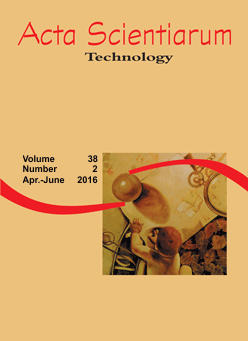<b>Dispersion of pollutants in watercourses intercepted by highway BR-050, in the Triângulo Mineiro region, Minas Gerais, Brazil
DOI:
https://doi.org/10.4025/actascitechnol.v38i2.27742Keywords:
Bom Jardim Stream, Jordão river, saline tracer, fluorescent tracer, longitudinal dispersion coefficientAbstract
Models based on the diffusive-advective equations are valuable tools for forecasting of contamination levels downstream from spill points. These models require field parameters for validation. The longitudinal dispersion coefficient EL, which translates the transport potential of dilute pollutant is amongst the most important parameters. Based on field techniques using saline and fluorescent tracers, this study determined the EL in three streams intercepted by highway BR-050, all located in the Paranaíba River Basin. The discrepancy ratios (Rd) of some experimental methods and equations reported in the literature were analyzed and compared with the standard routing procedure. Comparing the results of the Moment (statistical), the Chatwin, the peak concentration and the crown concentration methods, the lowest discrepancy ratios were obtained for the latter two methods. Ribeiro, Silva, Soares, and Guedes (2010) also showed that the peak concentration and the crown concentration methods produce the lowest discrepancy ratios. The analysis of contamination scenarios clearly illustrates the direct relationship between pollutant transport capacity and water discharges in natural watercourses.Â
Downloads
Downloads
Published
How to Cite
Issue
Section
License
DECLARATION OF ORIGINALITY AND COPYRIGHTS
I Declare that current article is original and has not been submitted for publication, in part or in whole, to any other national or international journal.
The copyrights belong exclusively to the authors. Published content is licensed under Creative Commons Attribution 4.0 (CC BY 4.0) guidelines, which allows sharing (copy and distribution of the material in any medium or format) and adaptation (remix, transform, and build upon the material) for any purpose, even commercially, under the terms of attribution.
Read this link for further information on how to use CC BY 4.0 properly.



















8.png)




